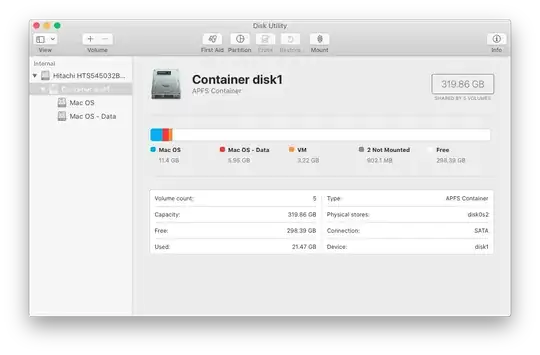I am running Mac OS Catalina 10.15.6 with APFS formatted disk on an unsupported MAC using dosdude1 guide. My experience from windows is I had to make careful calculations on pagefile.sys and run into limits on swap and memory. Since I’m new to Mac, I wish to avoid any mistakes and learn how to manage things properly.
This is the view of my disk
I have 4 Gigs of RAM on my system.
I want to increase the sizeof the Virtual Memory VM (which is 3.22 GB currently).
I have searched the internet in vain. Even a question in Ask Different has not been answered. My terms to solve this on windows aren’t helping me on Mac.
How do I achieve my goals and choose which size I should allocate?
